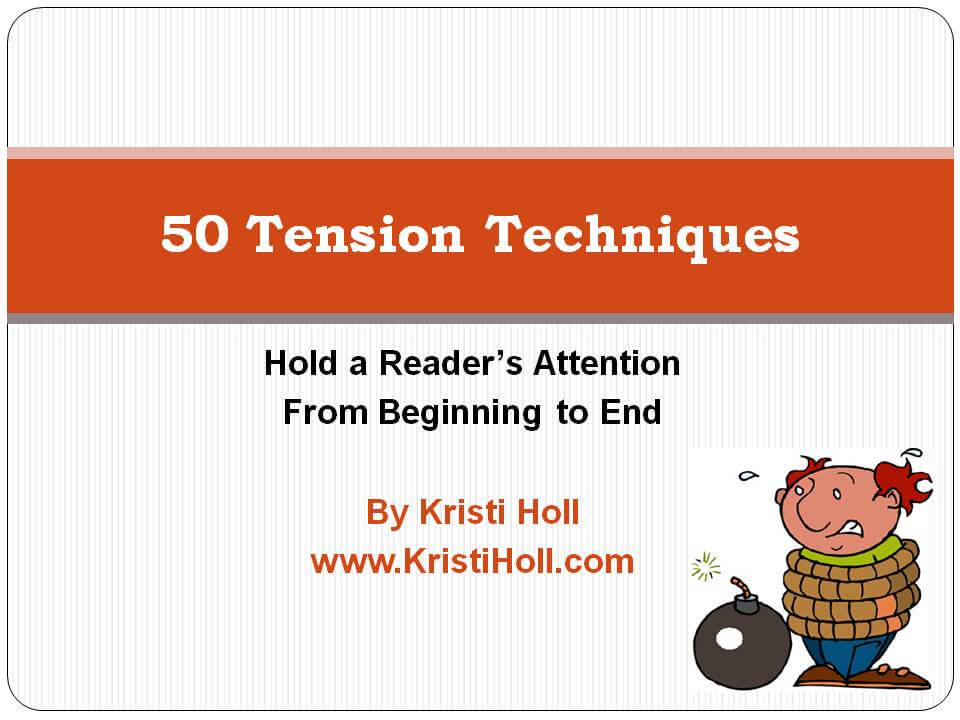 What quality must your prose have to keep readers reading? TENSION. That’s it. And 50 Tension Techniques will show you how.
What quality must your prose have to keep readers reading? TENSION. That’s it. And 50 Tension Techniques will show you how.
Create tension on every page, and even readers who dislike your work may keep reading. (“It’s a silly book, but I still couldn’t put it down!”) Fail to create tension and even your fans will stop reading. (“She writes really well, but I just couldn’t finish it.”)
You need uncertainty in your story. Readers read to find out what will happen next. Your job is to first create that initial uncertainty—create an “itch” for the reader. And as each uncertainty is answered in the story, it must be replaced with new uncertainties. Tension depends heavily on creating a steady flow of itchy uncertainties.
If readers have nothing to find out, nothing to anticipate, and nothing to be anxious over, they won’t read. Tension is a state of mind. To maximize suspense you must emphasize the tension, stretch readers’ emotions, and raise the stress levels.
Suspense is not about the things that are happening; it’s about the things that might happen, that threaten to happen. Tension exists between the time the reader knows what might happen and the time it actually happens—or doesn’t.
Tension is the act of building or prolonging a crisis. It’s the bump in the night, the school yard bully, the scary stepfather — it’s making readers aware of the peril. (A baby straying from its mother and toddling onto the railroad tracks makes you uneasy. Tension begins when, in the distance, a train whistle is heard and the baby plops down on the tracks to play.)
You need not see menace in every person or circumstance. But you must be aware as the writer of the potential threats – and make your reader aware. You must feel the tension, and your readers must feel the tension – through your writing. The following four areas are places where you may need to infuse tension in your writing.
- 14 techniques for Conflict/Plot
- 12 techniques for Characters
- 15 techniques for Dialogue/Inner Thoughts
- 9 techniques for Setting
So if you have ever experienced a dragging plot, flat characterization, ho-hum dialogue, or a long and boring setting in your writing, this is the book for you!
For a limited time, this e-book is FREE. Just email me at kristi.holl@gmail.com and tell me that you’d like to have the e-book. I will email you the PDF at no charge.